BACK TO
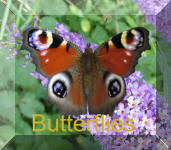
Resident
When newly emerged, the Ringlet has a velvety appearance and is almost black, with a white fringe to the wings. The small circles on the underwings, which give the butterfly its name, vary in number and size and may be enlarged and elongated or reduced to small white spots; occasionally they lack the black ring.
Bramble and Wild Privet flowers are favourite nectar sources, and adults continue to fly with a characteristic bobbing flight in dull, cloudy conditions when most other butterflies are inactive.
This widespread butterfly has extended it range in England and Scotland in recent years.
Family Nymphalidae.
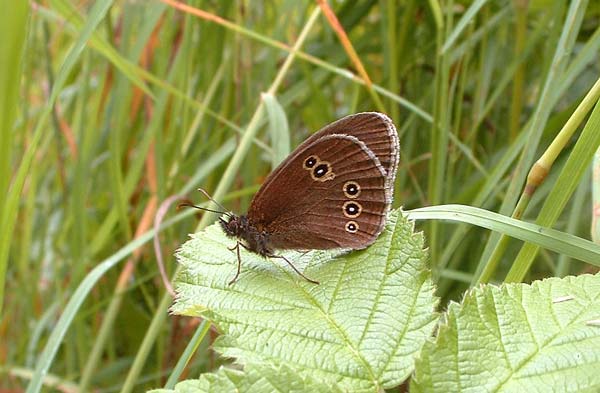
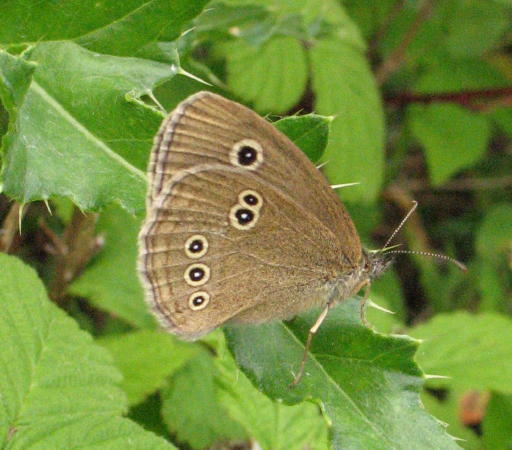
IMAGE (C) COLIN DUKE 2006 ALL RIGHTS
RESERVED
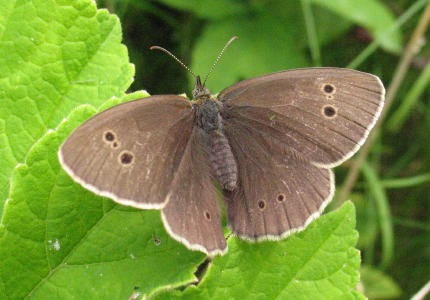
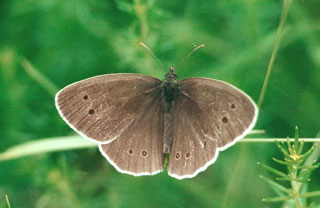
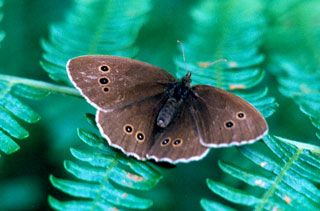
Foodplants
Coarser grasses are used, including Cock's-foot
(Dactylis glomerata), False
Brome (Brachypodium sylvaticum), Tufted Hair-grass (Deschampsia
cespitosa), Common
Couch (Elytrigia repens), and meadow-grasses (Poa spp.).
Other species of grass may also be used.
Habitat
Tall grassland is used, mainly in damp situations in partial shade on heavy
soils where grasses are lush, especially in woodland rides and glades.
The butterfly also occurs on commons, verges, and riverbanks, especially
on clay soils. In northern areas, it is found in more open, less shady,
situations
Identification
Medium sized; wingspan, 45-55 mm.
Both sexes are velvety dark brown with a conspicuous white fringe to both sets of wings. Typically there is a pair of eyespots on both forewings and between two and five eyespots on each hindwing. Each eyespot consists of a white centre surrounded by a dark brown ring which, itself, id surrounded by a golden or yellow ring. The undersides of the wings are identically colour-patterned like the upper surfaces but the ringed eyespots are much clearer.
Behaviour and life history
The Ringlet is a colonial species and tends not to wander far from its breeding colony which is centred on coarse grassland, often in rather damper locations. The species overwinters as a caterpillar to emerge in the spring to feed on grasses. It pupates during June before emerging as an adult in July.
Where to look for it
It particularly favours warm, but damper, coarse grasslands that are well sheltered from the wind. It will also frequent nearby shrubs and hedgerows. It is frequently seen in urban gardens but avoids extensive areas of regularly mown grassland such as is found in parks.
Distribution and status
It is common and widespread wherever suitable habitats occur
Conservation status
UK BAP status: not listed
Butterfly Conservation priority: low
European threat status: not threatened
European/world range
Across Europe except in central and southern Spain, Portugal, peninsular
Italy, and northern Scandinavia, and extends eastwards across Asia to Japan.
It is stable in most European countries, but its overall range appears
to be shifting northwards.
Similar species
At a close distance, its numerous eyespots distinguish it from all other brown butterflies. At a further distance and on the wing it is easily confusable with the Meadow Brown, Maniola jurtina, although its darker velvety brown colouration combined with the conspicuously white-fringed wings may often be sufficient to separate it.